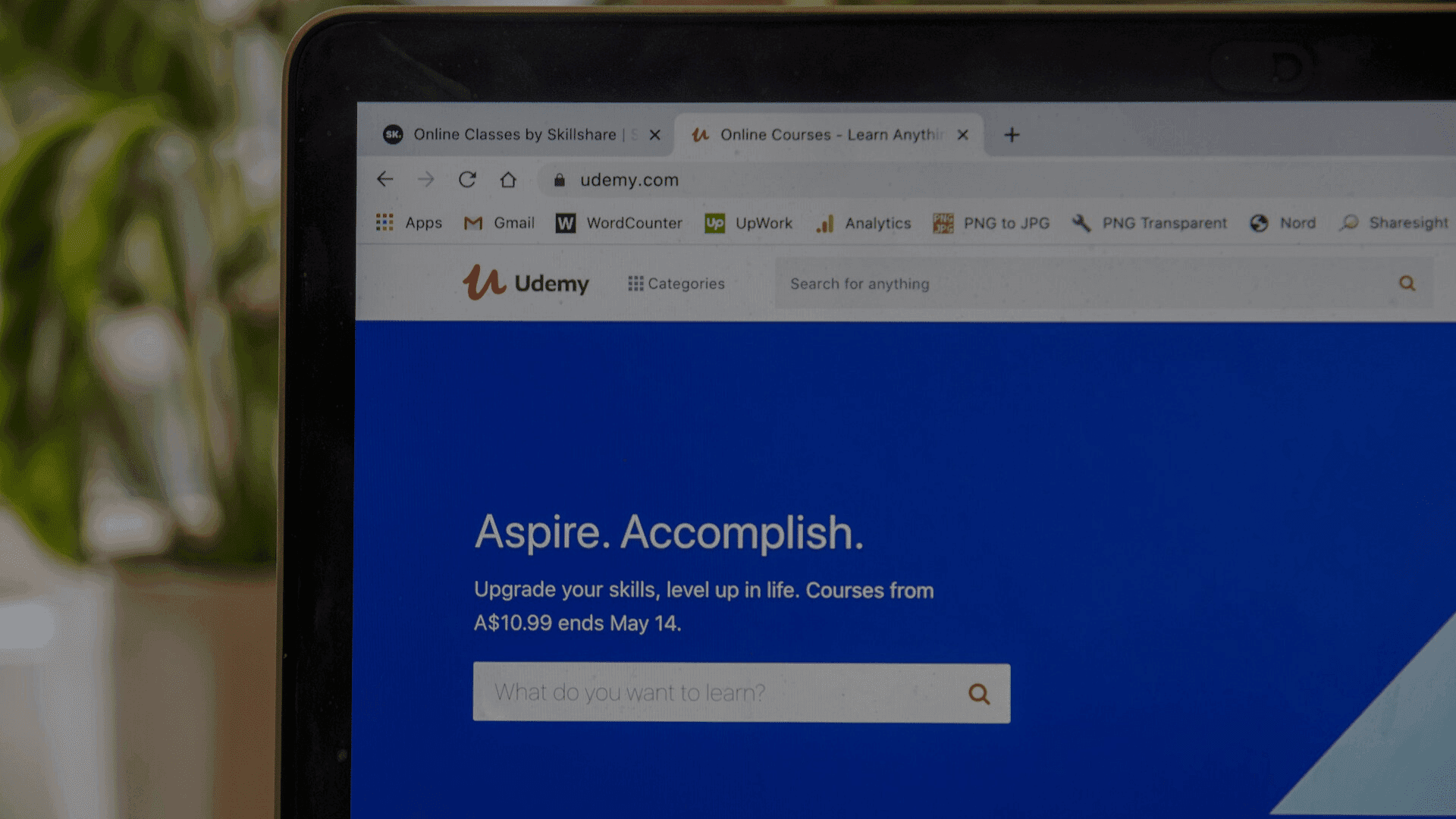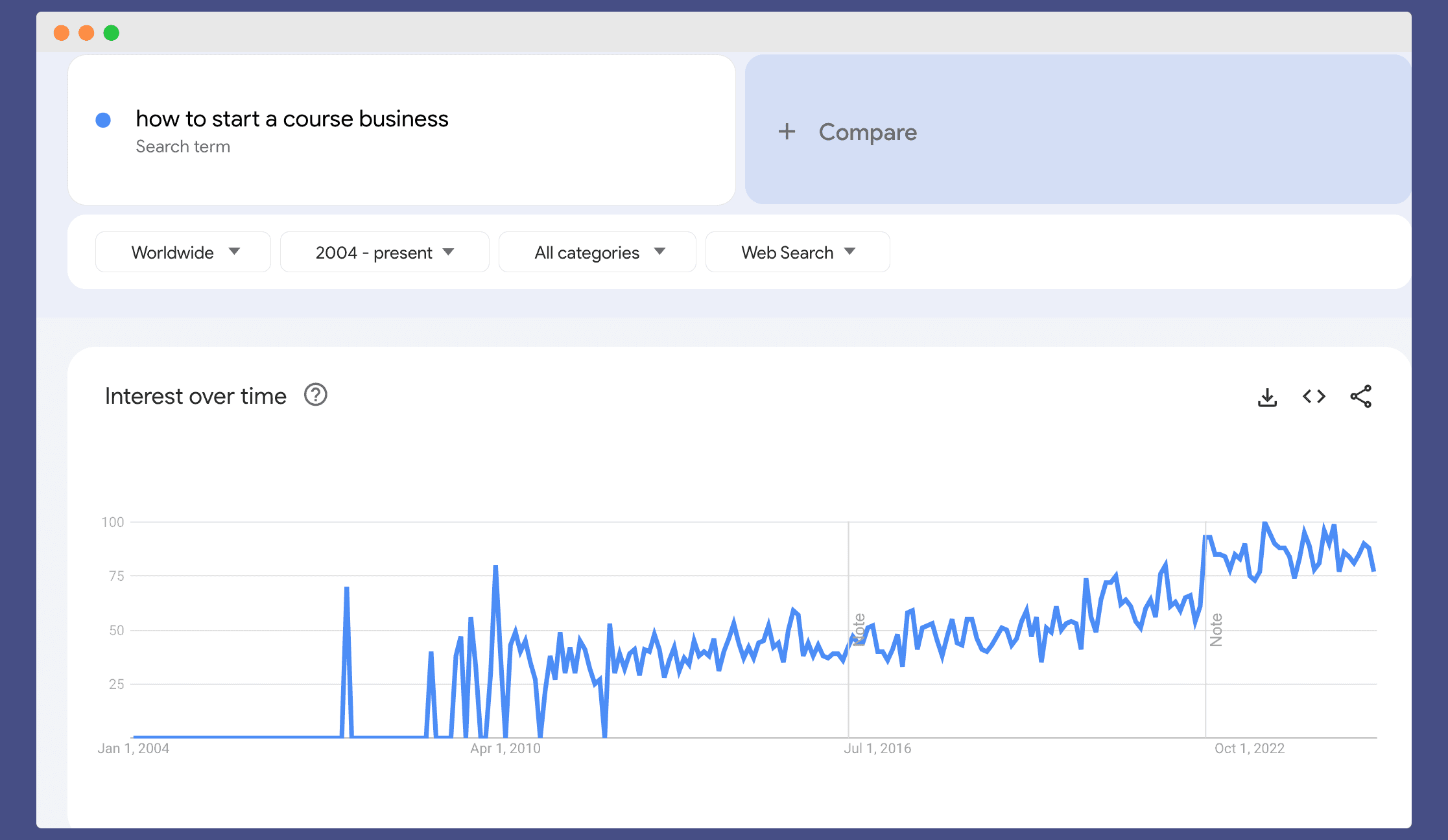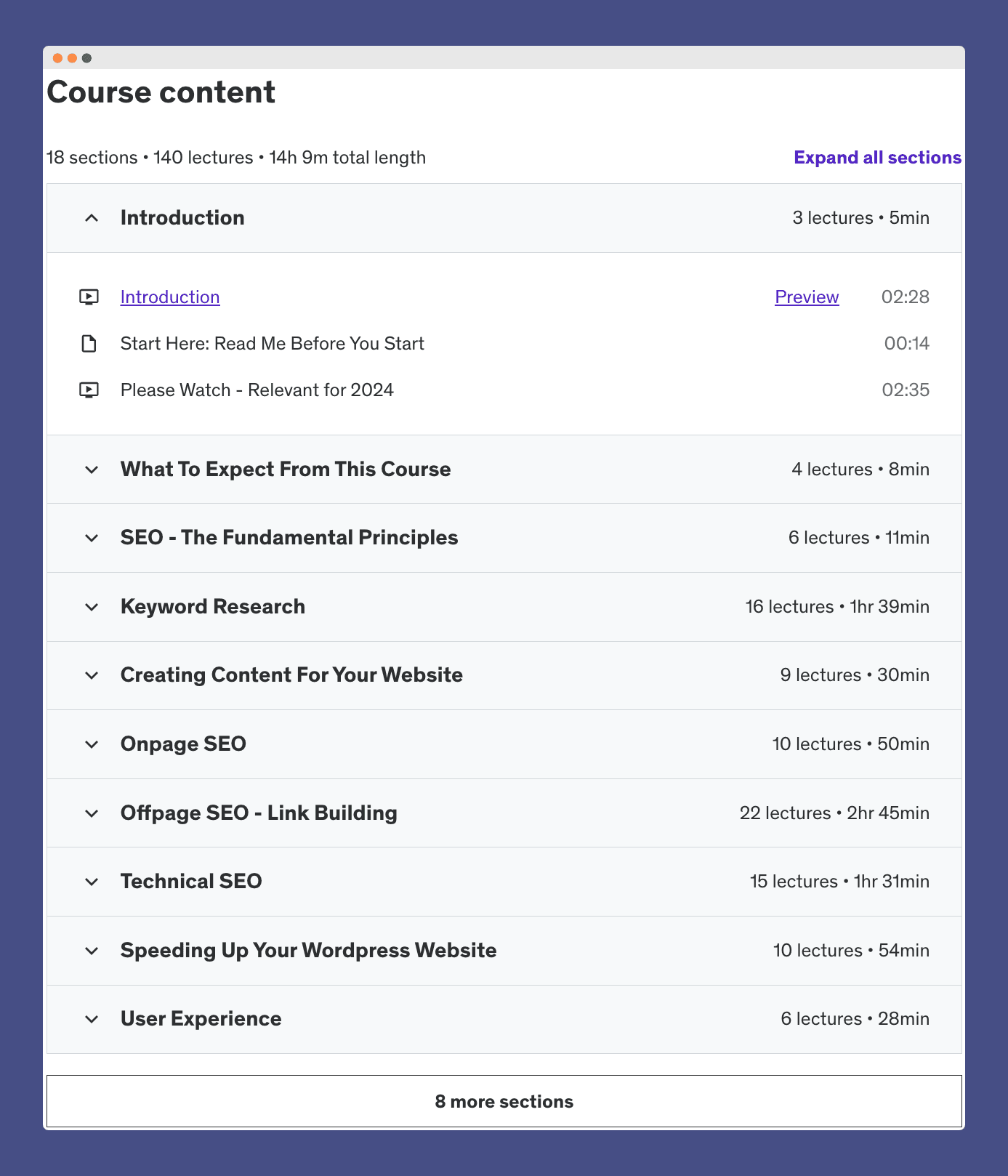How to Start an Online Course Business - A Complete Guide
How to Start an Online Course Business - A Complete Guide



Introduction
Introduction
Starting an online course business can be a powerful way to share knowledge, earn income, and build an audience. The online course industry is thriving, with more people turning to the internet to learn new skills.
(People are actively getting into this space)

Creating a course allows you to turn your expertise into a profitable business. This guide will cover the steps you need to go from idea to launch and beyond, helping you set up a sustainable online course business.
Starting an online course business can be a powerful way to share knowledge, earn income, and build an audience. The online course industry is thriving, with more people turning to the internet to learn new skills.
(People are actively getting into this space)

Creating a course allows you to turn your expertise into a profitable business. This guide will cover the steps you need to go from idea to launch and beyond, helping you set up a sustainable online course business.
Contents
Boost your business visibility to thousands of engaged readers!
Get Featured on 100+ pages across the FounderNoon website.
One month stretch ⇢ $100
Three-month stretch ⇢ $250
Boost your business visibility to thousands of engaged readers!
Get Featured on 100+ pages across the FounderNoon website.
One month stretch ⇢ $100
Three-month stretch ⇢ $250
Contents
1. Choosing the Right Course Topic
1. Choosing the Right Course Topic
Identify Your Expertise
The first step is to choose a topic that you know well. Pick something you are passionate about and that you believe people would be interested in learning. Your topic should have real value, meaning your knowledge can help solve a specific problem or fulfill a need.
Validate Your Course Idea
Not every idea makes a profitable course. To validate your topic:
Check online course platforms like Udemy, Teachable, and Skillshare. Search for courses similar to your idea. If there are other courses on your topic, that’s a good sign.
Join Facebook groups or online communities in your topic area. Look at the types of questions people ask. This can give insight into what potential students might want to learn.
Run a simple survey to test demand. Ask potential students what they’d like to learn and if they’d pay for a course on the topic.
Research Your Competitors
Look at what other course creators are offering in your niche. Identify gaps in their courses that you could fill. This can help you position your course in a way that stands out.
Identify Your Expertise
The first step is to choose a topic that you know well. Pick something you are passionate about and that you believe people would be interested in learning. Your topic should have real value, meaning your knowledge can help solve a specific problem or fulfill a need.
Validate Your Course Idea
Not every idea makes a profitable course. To validate your topic:
Check online course platforms like Udemy, Teachable, and Skillshare. Search for courses similar to your idea. If there are other courses on your topic, that’s a good sign.
Join Facebook groups or online communities in your topic area. Look at the types of questions people ask. This can give insight into what potential students might want to learn.
Run a simple survey to test demand. Ask potential students what they’d like to learn and if they’d pay for a course on the topic.
Research Your Competitors
Look at what other course creators are offering in your niche. Identify gaps in their courses that you could fill. This can help you position your course in a way that stands out.
2. Planning Your Course Content
2. Planning Your Course Content
Outline Your Course Material
Break down your topic into a list of key points or lessons. Think about the most logical order for students to learn each concept. An outline is like the skeleton of your course, guiding students from start to finish.
(see example below)

Decide on Course Format
Choose the format that best fits your content:
Video lessons work well for visual demonstrations.
Slideshows can be helpful for theoretical or concept-heavy topics.
Worksheets or guides provide hands-on practice.
Focus on Student Engagement
Make your course interactive to keep students engaged. Use quizzes, assignments, or discussion prompts to reinforce learning. Engaged students are more likely to finish your course and leave positive reviews.
Outline Your Course Material
Break down your topic into a list of key points or lessons. Think about the most logical order for students to learn each concept. An outline is like the skeleton of your course, guiding students from start to finish.
(see example below)

Decide on Course Format
Choose the format that best fits your content:
Video lessons work well for visual demonstrations.
Slideshows can be helpful for theoretical or concept-heavy topics.
Worksheets or guides provide hands-on practice.
Focus on Student Engagement
Make your course interactive to keep students engaged. Use quizzes, assignments, or discussion prompts to reinforce learning. Engaged students are more likely to finish your course and leave positive reviews.
3. Selecting the Right Online Course Platform
3. Selecting the Right Online Course Platform
Popular Platforms to Consider
Platforms like Teachable, Thinkific, and Kajabi allow you to host and sell your course with ease. They come with tools for content delivery, payment processing, and marketing. Some platforms also offer analytics to track student progress and course performance.
Key Features to Look For
When choosing a platform, consider:
Ease of Use: Can you upload content and manage the course easily?
Pricing Options: Compare fees and revenue-sharing structures.
Marketing Tools: Does the platform support email marketing, sales pages, and SEO?
Community Features: Some platforms offer tools to create student communities.
Self-Hosted vs. Platform-Hosted
Self-hosting gives you more control but requires technical skills and setup. Platform-hosted solutions are easier for beginners, though you’ll have less customization. Choose what best fits your goals and comfort level.
Popular Platforms to Consider
Platforms like Teachable, Thinkific, and Kajabi allow you to host and sell your course with ease. They come with tools for content delivery, payment processing, and marketing. Some platforms also offer analytics to track student progress and course performance.
Key Features to Look For
When choosing a platform, consider:
Ease of Use: Can you upload content and manage the course easily?
Pricing Options: Compare fees and revenue-sharing structures.
Marketing Tools: Does the platform support email marketing, sales pages, and SEO?
Community Features: Some platforms offer tools to create student communities.
Self-Hosted vs. Platform-Hosted
Self-hosting gives you more control but requires technical skills and setup. Platform-hosted solutions are easier for beginners, though you’ll have less customization. Choose what best fits your goals and comfort level.
4. Building Your Course and Marketing Materials
4. Building Your Course and Marketing Materials

Recording High-Quality Content
Video is often the preferred format for online courses. Use good lighting, clear audio, and a quiet space. Speak directly to your students in a clear, conversational tone. You don’t need a professional setup – a smartphone and lapel mic can work well.
Creating Additional Materials
Supplement your videos with downloadable materials like PDFs, worksheets, and templates. These resources give students more value and practical tools for applying what they’ve learned.
Writing Your Course Sales Page
Your sales page should clearly explain:
What your course covers
Who the course is for
What results students can expect
Use persuasive language that connects with the student's goals or pain points. Include testimonials or success stories to build credibility.

Recording High-Quality Content
Video is often the preferred format for online courses. Use good lighting, clear audio, and a quiet space. Speak directly to your students in a clear, conversational tone. You don’t need a professional setup – a smartphone and lapel mic can work well.
Creating Additional Materials
Supplement your videos with downloadable materials like PDFs, worksheets, and templates. These resources give students more value and practical tools for applying what they’ve learned.
Writing Your Course Sales Page
Your sales page should clearly explain:
What your course covers
Who the course is for
What results students can expect
Use persuasive language that connects with the student's goals or pain points. Include testimonials or success stories to build credibility.

















2,678+ people enjoy it
➤ Every week, we dig up stories of how regular people started and grew their businesses—
➤ Plus the marketing hacks that won them customers.
➤ Then, we share those insights with you.
➤ Every week, we dig up stories of how regular people started and grew their businesses—
➤ Plus the marketing hacks that won them customers.
➤ Then, we share those insights with you.
5. Marketing Strategy for Your Online Course
5. Marketing Strategy for Your Online Course
Define Your Target Audience
Knowing who your course is for will guide your marketing strategy. Identify your ideal student’s pain points, goals, and learning preferences. Tailor your content and ads to speak directly to these needs.
Creating a Marketing Funnel
A marketing funnel guides potential students through awareness, interest, and purchase stages. Here’s how to set it up:
Lead Magnet: Offer a free resource or mini-course to attract students.
Email Marketing: Nurture leads with tips, insights, and course highlights.
Sales Page: Drive leads to your sales page, where they can sign up.
Using Social Media and Facebook Groups
Social media is an effective way to reach your audience. Create content that teaches something small, shares success stories, or provides quick tips related to your course. Facebook groups, in particular, allow you to connect directly with interested students.
Email Marketing for Course Launches
Email is one of the highest-converting marketing channels. Set up a sequence of emails to build anticipation and highlight key benefits of your course. Send reminders as you get closer to the launch date.
Define Your Target Audience
Knowing who your course is for will guide your marketing strategy. Identify your ideal student’s pain points, goals, and learning preferences. Tailor your content and ads to speak directly to these needs.
Creating a Marketing Funnel
A marketing funnel guides potential students through awareness, interest, and purchase stages. Here’s how to set it up:
Lead Magnet: Offer a free resource or mini-course to attract students.
Email Marketing: Nurture leads with tips, insights, and course highlights.
Sales Page: Drive leads to your sales page, where they can sign up.
Using Social Media and Facebook Groups
Social media is an effective way to reach your audience. Create content that teaches something small, shares success stories, or provides quick tips related to your course. Facebook groups, in particular, allow you to connect directly with interested students.
Email Marketing for Course Launches
Email is one of the highest-converting marketing channels. Set up a sequence of emails to build anticipation and highlight key benefits of your course. Send reminders as you get closer to the launch date.
6. Launching Your Online Course
6. Launching Your Online Course
Build Buzz Before Launch
Generate excitement with sneak peeks, testimonials, and countdowns. Use social media and email to keep your audience interested. Share success stories or showcase a preview of the content.
Follow a Launch Checklist
Before launch, ensure:
Your sales page is live and functioning correctly.
Content is accessible on the platform with no technical issues.
Emails and social posts are scheduled to go out on time.
Consider offering a limited-time discount to motivate students to sign up early.
Build Buzz Before Launch
Generate excitement with sneak peeks, testimonials, and countdowns. Use social media and email to keep your audience interested. Share success stories or showcase a preview of the content.
Follow a Launch Checklist
Before launch, ensure:
Your sales page is live and functioning correctly.
Content is accessible on the platform with no technical issues.
Emails and social posts are scheduled to go out on time.
Consider offering a limited-time discount to motivate students to sign up early.
7. Selling Your Course: Strategies to Boost Sales
7. Selling Your Course: Strategies to Boost Sales
Optimizing Your Sales Page
The sales page is crucial for converting visitors into students. Focus on clarity and benefits:
Clearly state the value of the course.
Highlight testimonials or case studies.
Include a FAQ section to address common questions.
Offering Free Trials or Previews
Allowing students to try part of the course for free can lead to more enrollments. It lets them experience the value and builds trust in your content.
Leveraging Testimonials and Case Studies
Social proof reassures potential students. Include testimonials from people who benefited from your course. If you don’t have testimonials yet, ask beta testers for feedback.
Pricing Strategies
Experiment with pricing strategies to find the best fit for your audience. You might offer bundle options, payment plans, or premium versions with extra content.
Optimizing Your Sales Page
The sales page is crucial for converting visitors into students. Focus on clarity and benefits:
Clearly state the value of the course.
Highlight testimonials or case studies.
Include a FAQ section to address common questions.
Offering Free Trials or Previews
Allowing students to try part of the course for free can lead to more enrollments. It lets them experience the value and builds trust in your content.
Leveraging Testimonials and Case Studies
Social proof reassures potential students. Include testimonials from people who benefited from your course. If you don’t have testimonials yet, ask beta testers for feedback.
Pricing Strategies
Experiment with pricing strategies to find the best fit for your audience. You might offer bundle options, payment plans, or premium versions with extra content.
8. Long-Term Growth and Retention Strategies
8. Long-Term Growth and Retention Strategies
Build a Student Community
A strong community can drive long-term engagement and referrals. Set up a private Facebook group where students can ask questions and share experiences. Engage regularly to keep the group active.
Offer Follow-Up Courses
Students who finish your course may want to go deeper or learn related skills. Develop advanced or complementary courses. Selling to existing students is often easier than acquiring new ones.
Improve Your Course Using Feedback
Collect feedback from students to see what’s working and where you can improve. This can help you keep your course content relevant and valuable, leading to better reviews and higher retention.
Consider Partnerships for Growth
Partnering with influencers, businesses, or other course creators can expand your reach. Look for collaborators who align with your brand and audience. Partnerships can drive more enrollments and help you scale.
Build a Student Community
A strong community can drive long-term engagement and referrals. Set up a private Facebook group where students can ask questions and share experiences. Engage regularly to keep the group active.
Offer Follow-Up Courses
Students who finish your course may want to go deeper or learn related skills. Develop advanced or complementary courses. Selling to existing students is often easier than acquiring new ones.
Improve Your Course Using Feedback
Collect feedback from students to see what’s working and where you can improve. This can help you keep your course content relevant and valuable, leading to better reviews and higher retention.
Consider Partnerships for Growth
Partnering with influencers, businesses, or other course creators can expand your reach. Look for collaborators who align with your brand and audience. Partnerships can drive more enrollments and help you scale.
9. Final Thoughts: Becoming a Successful Online Course Creator
9. Final Thoughts: Becoming a Successful Online Course Creator
Starting an online course business takes time, effort, and patience. The key to long-term success is consistent improvement, engaging with your audience, and keeping your content fresh and valuable. Remember, you’re building something that can impact people’s lives – stay focused on delivering quality, and your efforts will pay off.
Starting an online course business takes time, effort, and patience. The key to long-term success is consistent improvement, engaging with your audience, and keeping your content fresh and valuable. Remember, you’re building something that can impact people’s lives – stay focused on delivering quality, and your efforts will pay off.
Like this?
Like this?
Do me a favor and pass this on to a pal or share? It'll take just 20 seconds—this one took me about 5.4 hours to research and write 🫠
P.S. I’ve got a weekly newsletter where I share stories about founders who have started successful online businesses, growth strategies, and tips to start/grow your own business. I would love for you to join here
Do me a favor and pass this on to a pal or share? It'll take just 20 seconds—this one took me about 5.4 hours to research and write 🫠
P.S. I’ve got a weekly newsletter where I share stories about founders who have started successful online businesses, growth strategies, and tips to start/grow your own business. I would love for you to join here






